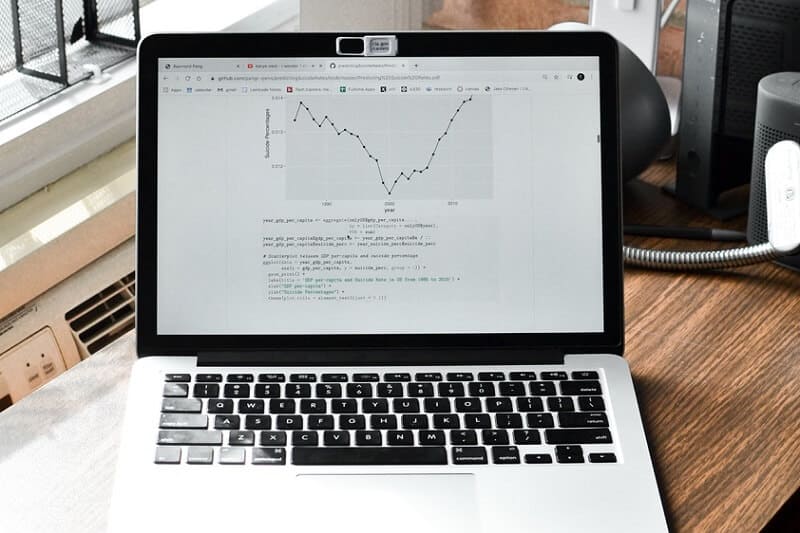
Stock charts will provide you the information about the stock’s past trading prices and volumes. This is a remarkable advantage when it comes to technical analysis.
By Guy Avtalyon
How to read stock charts and what they are trying to tell you? How can you use them in making your investment decisions? So let’s see the importance of price action and technical analysis. Because that’s it.
We are 100% sure you’ve already had the opportunity to see the stock charts, for example, Yahoo Finance is one of those places. If you want to get some experience with outlook and parameters, it is the right place. Also, you could see the stock charts when you examine the company’s stock you wanted to buy.
And what can you see?
There are two types of charts: line and candlestick. It looks so simple and a small graph but contains a lot of very important data. For example, you can see the opening and closing price, the lowest and the highest price of the stock, and plenty of other information set in that small image.
What trading charts can tell?
You must know, a chart is a visual illustration of changes in stock price and trading volume. They are not magical or scary. In essence, the charts do one easy job: They want to tell you a story about the stock. Stock charts will give you an objective picture without hypes and rumors. They will neglect even news and tell you the truth and what is really going on with your stock.
For example, when you learn how to read stock charts you’ll be able to notice if institutional investors are heavily selling. That will quickly provide you valuable info on what you have to do. The charts literally tell you that. If you see in the graph the investors are massively buying, what are you going to do? What do the charts want to tell you? They want to tell you: buy too. Or if you see they are selling: sell too. Those investors are heading the exits.
The institutional investors’ buying or selling will shift your stock up or down. And the charts will tell you that on time. So you’ll be ready for action. That is extremely important in the stock markets that are volatile and stock price can change in a second.
How to read stock charts
Reading charts is one of the most important investing skills. Stock charts will tell you if the stock is depreciating or appreciating because they are recording the stock price and volume history. Well, when you grow your skill in chart reading, you’ll be able to find more. You will notice some small, often indirect signs in the stock actions such as whether the particular stock showed some unusual activities.
You choose the type of chart that best suits you, a line chart or a candlestick. But the charts will show you the price of daily changes in its price area.
Let’s breakdown all these bars and lines
You will notice the vertical bars. They record the share price span for the chosen period. The horizontal dash that intersects within the price bar shows the current price. Also, it shows where a stock closed at the end of the day. If the color of the price bar is blue that means the stock closed up but if it is red the stock closed down.
In the volume area, below the horizontal line, you will also see bars but volume bars that represent the number of shares traded in some period, day, week, month, etc. The color of the bars tells us the same as price bars. Also, there you will see the average volume for some stock over the last 50 days.
Charts will tell you all about the average share price over the last 50 days and the last 200 days of trading. But by reading stock charts you will have the info about how the stock price moved compared to the market. It is a so-called relative strength line. When this line is trending up, we can say the particular stock is outperforming the market, the opposite means the stock is lagging the market.
Changing the time period
You can do that and have a look at the daily, weekly, monthly charts.
Daily stock charts will help you to measure the current strength or weakness of a stock. These charts are very useful for identifying the precise buy points and creating a short-term trading strategy.
Weekly stock charts will help you to recognize longer-term trends and patterns in stock prices. The weekly charts use logarithmic price scaling. So, you can easily make comparisons between stocks or the major market indexes.
Indicators in the stock charts
All the charts will come with them. Indicators are tools that provide visual representations of mathematical calculations on price and volume. Well, they will tell you where it is possible for the price to go further. The major types of indicators are a trend, volume, momentum, and volatility. Trend indicators show the direction of the market moving. They are also known as oscillators because they are moving like a wave from low value up to the high and back to low and high again as the market is changing.
Volume indicators will show you how volume is developing over time, how many stocks are being bought and sold over time.
Momentum indicators show strong the trend is. They can also reveal if a reversal will happen. They are useful for picking out price tops and bottoms.
Volatility indicators reveal how much the price is changing in a particular period. So, volatility isn’t a dangerous part of the markets, you have to know that. Without it, traders would never be able to make money! In other words, how is it possible to make a profit if the price never changes? High volatility means the stock price is changing very fast. Low volatility symbolizes small price moves.
Some traders don’t use indicators because they think the indicators can smudge the clear message that the market is telling. Well, that’s obviously an individual approach.
What are Support and Resistance Levels
Stock charts will help you to identify support and resistance levels for stocks. Support levels are price levels where you can see increased buying as support to stock’s price that will direct it back to the upside. Resistance levels, as the opposite, shows prices at which a stock has presented a trend to fall while trying to move higher, and switched to the downside.
Recognizing support and resistance levels is extremely important in stock trading. The point is to buy a stock at a support level and sell it at a resistance level. That’s how you can make money. If some stock has clear support and resistance levels, the breakout beyond them is an indicator of future stock price movement.
For example, you have in front of you the chart and you notice that the stock didn’t succeed to break above, let’s say $100 per share. And suddenly, it makes it. Well, in such a case you have a sign that the stock price will go up. You might see, as an example, that some stock traded in a tight range for a long time but once when it broke the support level, it will continue to fall until a new support level is established.
Bottom line
Knowing how to read stock charts will give you a powerful tool while trading. But you have to know that charts are not perfect tools. Even for the most experienced analysts. If they are, every stock trader and investor would be a billionaire.
Nevertheless, knowing how to read stock charts will surely help you. That may increase your chances of trading stocks. But you will need a lot of practice. The good news is that everyone who spends time and gives an effort to learn how to read stock charts can become a good chart analyst. Moreover, good enough to enhance the success in stock market trading.
Try to learn this. It can be valuable. We’re doing smart trading.



Leave a Reply